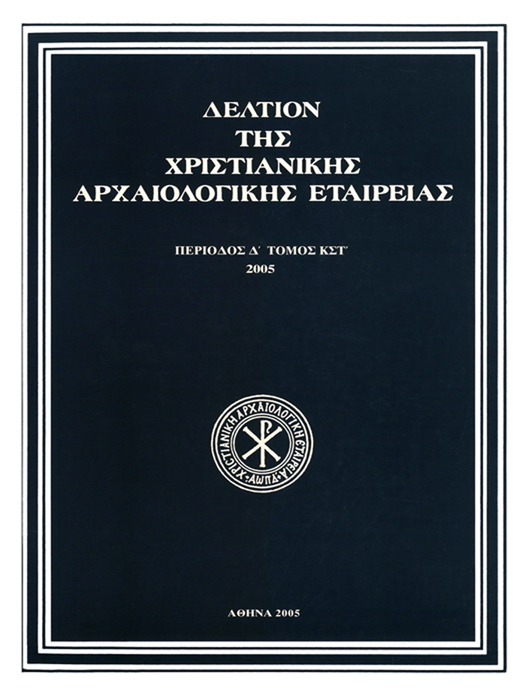Angelophany and Art after Iconoclasm

Abstract
Theological thinking after 843 was formulated and based on a new direct and more intimate participation in visions of epiphany. Under this light the cases of Angelophany are being examined and contextualized in works of art that were produced shortly after Iconoclasm, e.g. the vision of Isaiah in the manuscript of Christian Topography of the second half of the 9th century, or the Miracle at Chonae firstly depicted in the church of St. John (Güllü Dere) c. 900 in Cappadocia. It is being assumed through these examples that art after Iconoclasm showed a heightened awareness to make divine epiphany present both as historical occurrences and as an ongoing revelation of an abstract spiritual reality.
Article Details
- How to Cite
-
PEERS, G. (2011). Angelophany and Art after Iconoclasm. Deltion of the Christian Archaeological Society, 26, 339–344. https://doi.org/10.12681/dchae.452
- Section
- Articles
The copyright for articles in the journal Deltion of the Christian Archaeological Society (henceforth Deltion) is retained by the author(s), with first publication rights granted to the journal and to EIE/ EKT the right to store and communicate these articles to the public via its information infrastructures. By virtue of their appearance in this journal, articles are free to use with proper attribution for non-commercial uses under a ShareAlike obligation. The Christian Archaeological Society and EIE/EKT retain the worldwide right to reproduce, display, distribute, and use articles published in the Deltion in all formats and media, either separately or as part of collective works for the full term of copyright. This includes but is not limited to the right to publish articles in an issue of the Journal, copy and distribute individual reprints of the articles, authorize reproduction of articles in their entirety in another publication of the Christian Archaeological Society, and authorize reproduction and distribution of articles or abstracts thereof by means of computerized retrieval systems.


